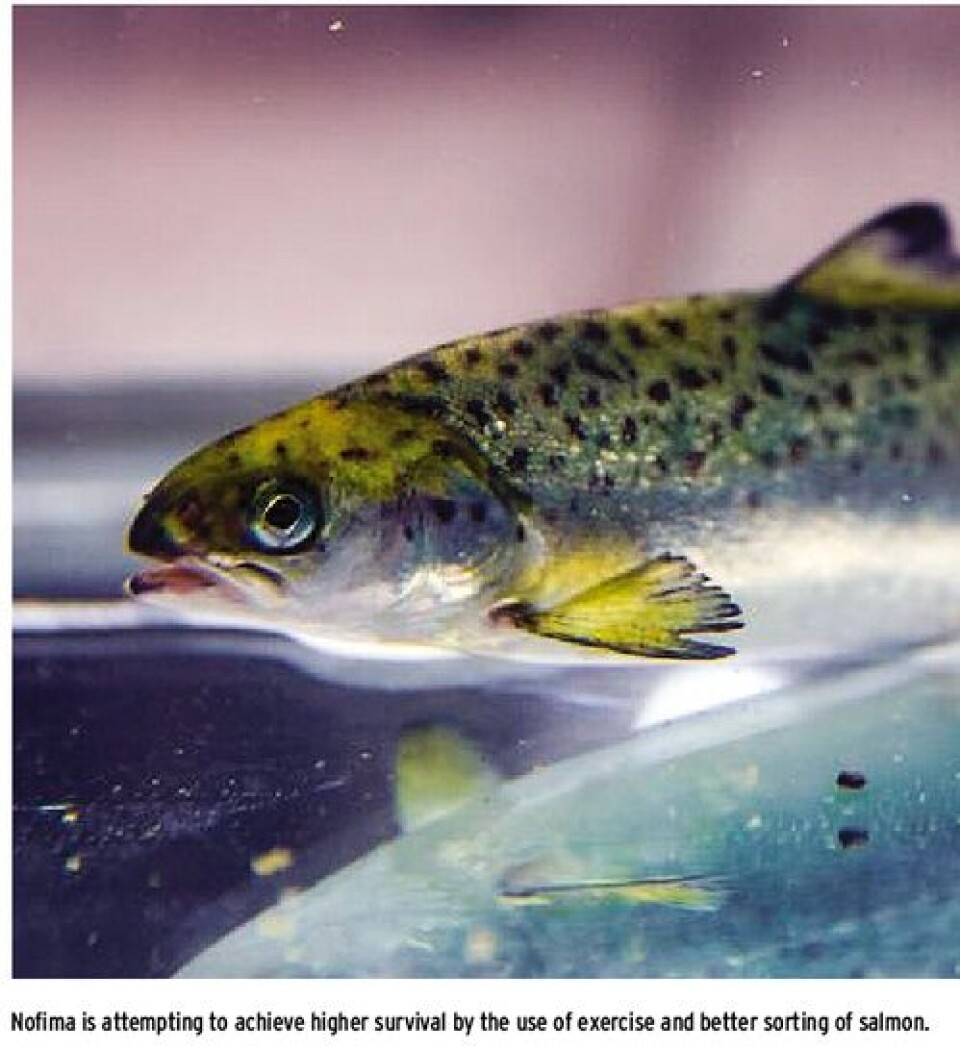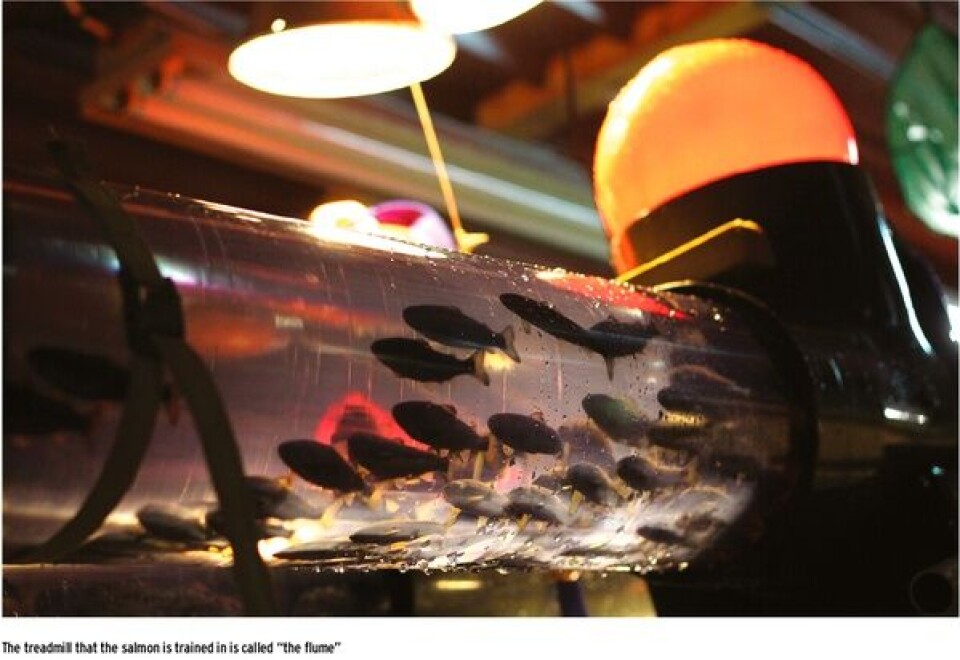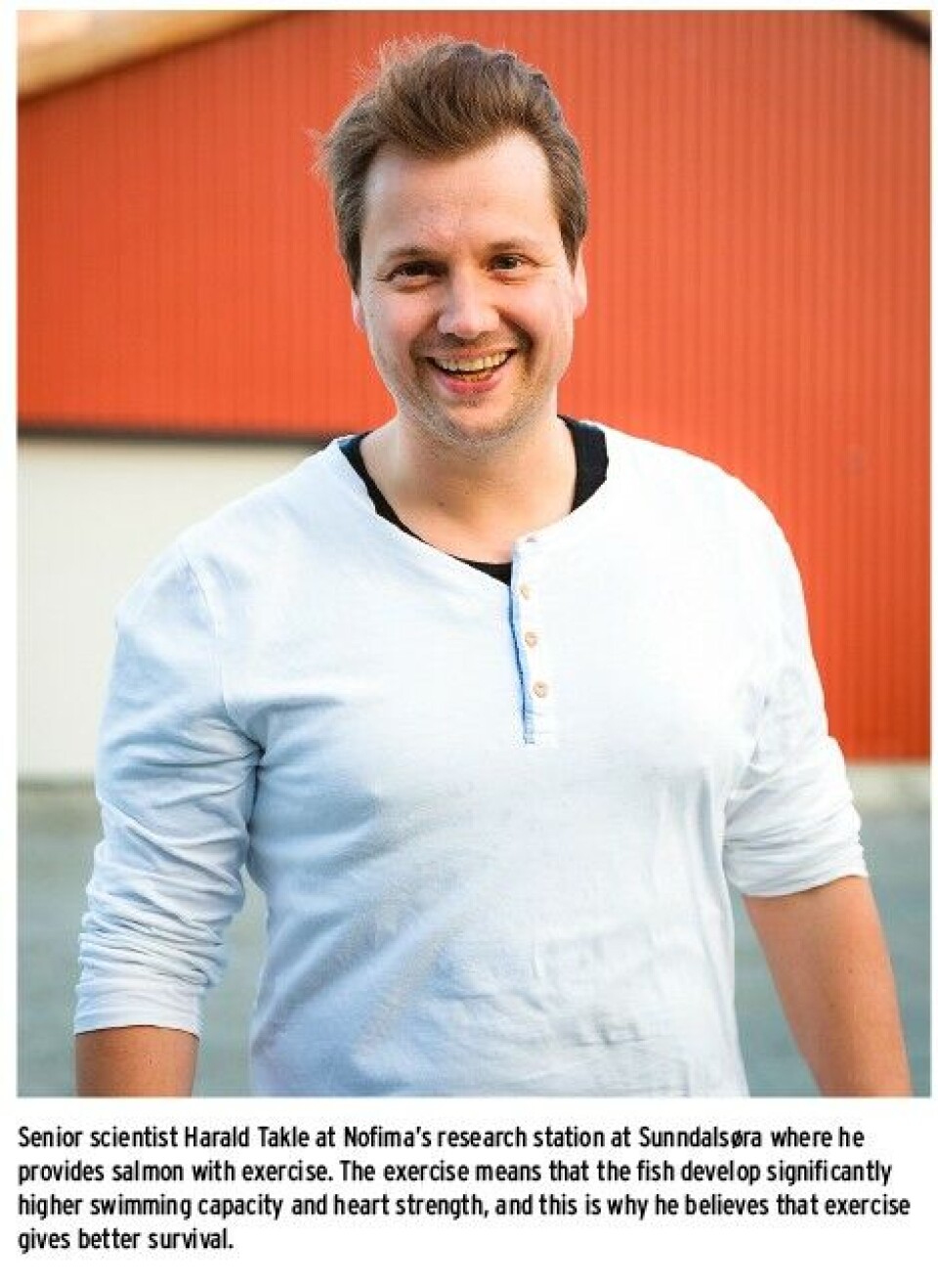Stronger hearts by sorting and exercise
The aquaculture industry has faced persistent challenges relating to survival after the smolts have been transferred to the sea. Figures from the Norwegian Food Safety Authority show that the annual loss is approximately 16%. A significant part of this is due to fish in poor condition, which are more receptive for disease. Such fish die relatively soon after being transferred to the sea. Nofima is attempting to achieve higher survival by the use of exercise and better sorting of salmon. “The FitSmolt project is intended to discover how the smolt can develop higher resistance to disease, how we can get them to deal with various types of stress better, and how they can grow rapidly, with natural organ development,” says Nofima Senior Scientist Harald Takle. The Fitsmolt project is co-funded by the Norwegian Research Council and the Norwegian Seafood Research Fund (FHF).

Sorting by swimming ability The scientists have previously shown that sorting the young salmon by swimming ability gives postsmolts whose heart muscle is 24% more powerful and whose gill surface area is 16% larger. These fish swim 66% more efficiently. The increase in heart capacity means that the fish grow more rapidly, and have higher resistance to disease. The next stage involves exercising the salmon right from an early age until they are transferred to the sea, with swimming exercise at the correct flow rate. Previous results have shown that more salmon survive after transfer to the sea when they have undergone extensive exercise as smolts. The scientists now want to see whether even more robust fish can be developed by exercising the fish throughout the complete fresh-water phase. The exercise means that the fish develop significantly higher swimming capacity and heart strength, and this is why the scientists believe that exercise gives better survival. “We also want to compare the heart capacity of farmed smolts with that of wild smolts, and identify markers that reflect these differences. The wild salmon will be taken from the Lærdal River, since we know that smolts from here are strong and swim well. The long-term goal is to ensure that future generations of farmed fish are at least as robust as their wild cousins,” says Takle.

About Nofima Nofima, the Norwegian Institute of Food, Fisheries and Aquaculture Research, was established in 2008. Nofima is one of Europe’s largest institutes for applied research within the fields of fisheries, aquaculture and food. The institute has around 350 employees and has an annual turnover of about NOK 530 million. We carry out internationally recognised research and develop solutions that provide a competitive edge throughout the value chain. The head office is located in Tromsø, and the research divisions are located in Bergen, Sunndalsøra, Stavanger, Tromsø and Ås.























































